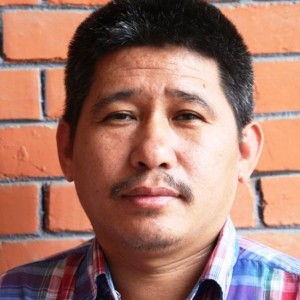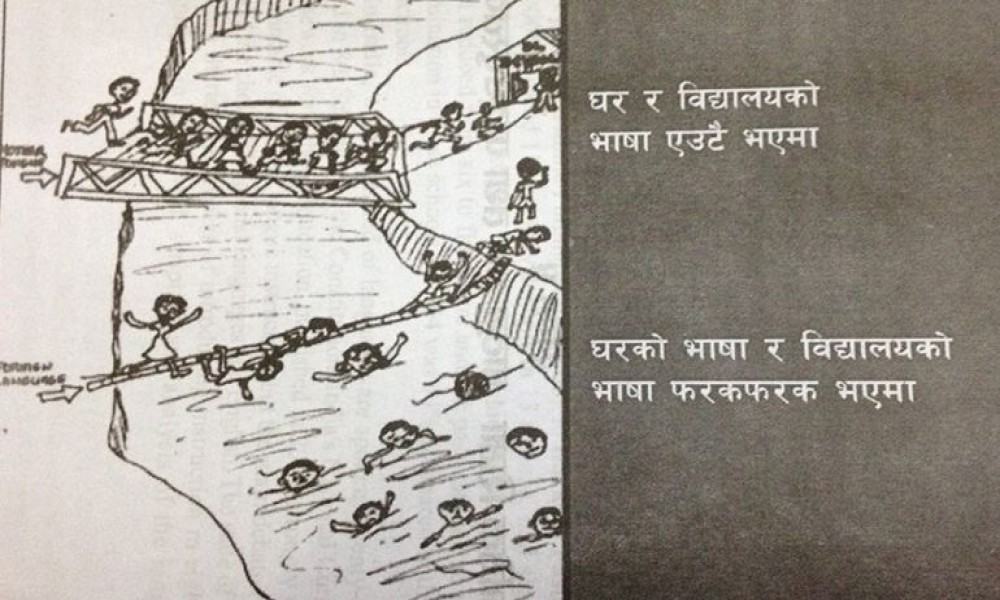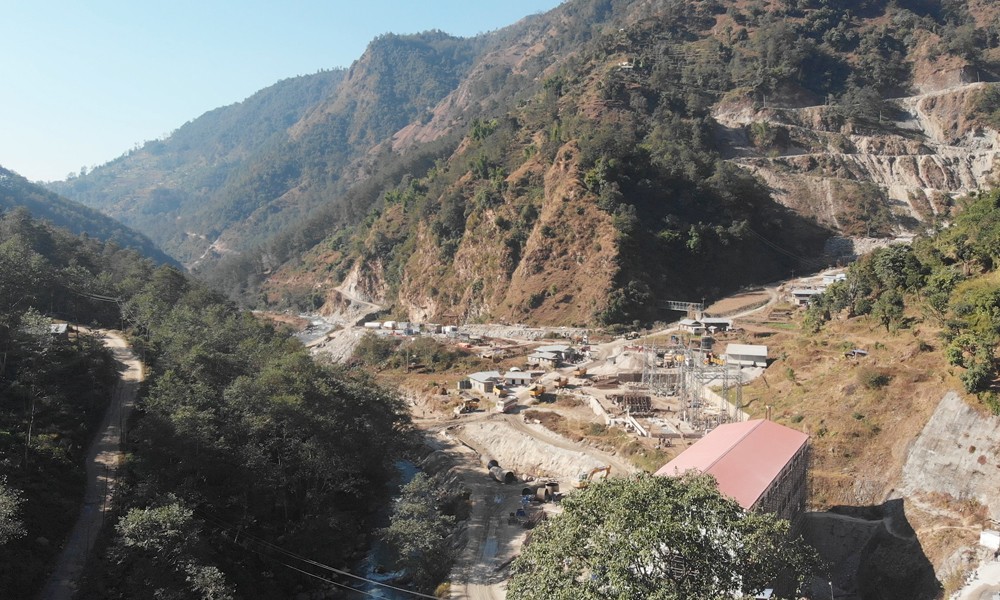Education through various mother tongues is now evolving as an integral part of our education system. While considering the multi-lingual structure of the Nepali society, the government is undertaking efforts to promote mother tongue education. As of now, the government has prepared education curricula in as many as 22 mother tongues. In some districts, mother tongue classes are already underway. But, there are questions over the effectiveness of mother tongue education programs run by the government. Also, there are also questions over the role of various linguistic groups in promoting mother tongue education.
Classification of schools
Due to the lack of effective mother tongue education programs, children from indigenous communities that have their own mother tongues are lagging behind children from the Khas-Nepali speaking communities.
In order to implement mother tongue education, schools need to be classified in three categories: the school where all students learn in the same mother tongue, the school where students belonging to two different ethnic groups learn in their own mother tongues and the school where all mother tongues are used to teach students.
Nepal's interim constitution-2007 has made it mandatory for the government to provide education to the basic-level (grade 1-8) students in mother tongues. It is not a different or alternative education model but part of the mainstream education system. The constitution says all subjects, except English and Nepali, should be taught in mother tongues.
Due to the lack of effective mother tongue education programs, children from indigenous communities that have their own mother tongues are lagging behind children from the Khas-Nepali speaking communities. Political, economic, cultural and administrative reforms are necessary but effective implementation of mother tongue education program is more important to deal with this problem. Without promoting mother tongue education program, eradication of inequality that has plagued the Nepali society cannot be imagined.
Reluctance in promoting mother tongue education
In Nepal, according to the 2011 census report, 123 caste/ethnic groups speak 127 languages. Nearly one in every two Nepalis, which is 44.6 per cent of the total population, speaks their own mother tongues. Maithali, Urdu and Bhojpuri are spoken by huge linguistic groups. Tharu, Tamang, Newari, Magar, Limbu, Gurung, Rai Bantawa, Rai Chamling, Rai Kulung, Rajbanshi, Sherpa, Santhal, Chepang, Danuwar, Sunuwar, Majhi, Thami, Bhujel, Thulung, Yakha, Dhimal, Tajpuriya, Sangpang, Khaling, Wambule, Kumal, Hyolmo, Nachhiring, Thakali and Jirel mother tongues are also spoken by not-so-insignificant linguistic groups. But, literacy level is low in these communities. The main reason behind low literacy in these communities is pretty obvious: lack of effectively-implemented mother tongue education programs.
Nearly one in every two Nepalis, which is 44.6 per cent of the total population, speaks their own mother tongues. Maithali, Urdu and Bhojpuri are spoken by huge linguistic groups.
Taking into account such a huge linguistic diversity, the government has involved local institutions (linguistic groups, school management committees, community based organizations and NGOs) to promote mother tongue education. It is good that the government has embraced the concept of decentralization in promotion of mother tongue education. But, how wise would it be to give the responsibility to local institutions at a time when local government bodies lack people's representatives? And, how aware, concerned or motivated are these local institutions to implement mother tongue education programs? As long as local institutions are not self-motivated, not much can be achieved through their involvement in mother tongue education promotion.
Indifference of stakeholders
There are multiple reasons behind the lack of implementation of mother tongue education programs. Most importantly, it is the indifference of linguist groups toward mother tongue education programs. They want their children to learn in English, not in their own mother tongues. Given the increasing power that English-speaking people enjoy, it is understood why they are indifferent toward their own mother tongues. But, lack of curricula, text books and teachers for mother tongue programs are other equally important reasons. Ethnic communities have also failed to keep a tab on resources provided to schools for running mother tongue education programs. As a result of all these reasons combined, mother tongue education program has failed to make a dent on providing better education to children of Indigenous Peoples. And, the consequence of this failure will be borne by no other communities but Indigenous Peoples.










